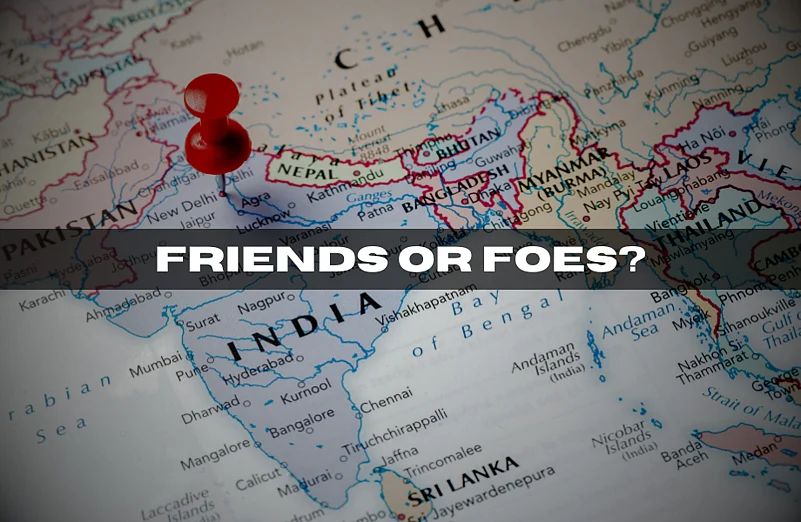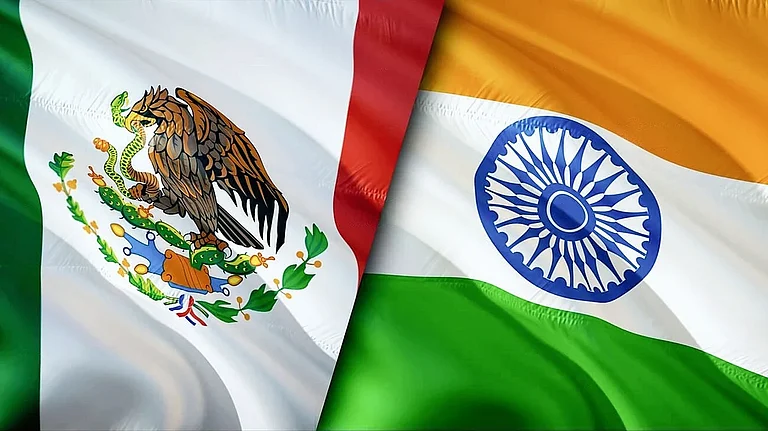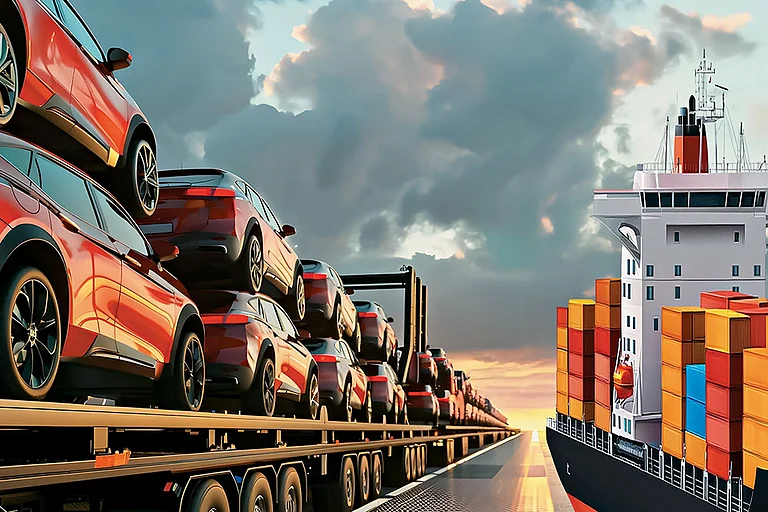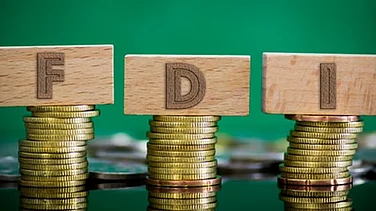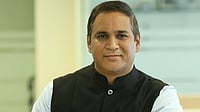Every nation desires peace and stability in its neighbourhood to prosper globally because Atal Bihari Vajpayee once said “friends can change but not neighbours who have to live together”. His saying reflects the importance of strong relationship with the border countries. If a country does not have hostile neighbours, it must not be in a favourable situation.
The picture looks complicated for India which is surrounded with crisis-hit neighbours. The country shares its land borders with Afghanistan, Bangladesh, Bhutan, China, Myanmar, Nepal and Pakistan, while its maritime neighbours include Sri Lanka and Maldives.
Most of these countries are facing political and economical turmoil --- Afghanistan’s economy collapsed since Taliban took over the country in August 2021, Bangladesh’s chaos after dramatic resignation of Prime Minister Sheikh Hasina, Sri Lanka’s crisis due to disastrous economic policy missteps, China’s property crisis, and more.
Now, the question arises, “Where does India stand?” Such an unstable atmosphere in bordering nations can become a concern for the Indian economy. However, India has emerged as one of the global leaders in recent times, and the country is aiming to become a developed nation by 2047. The government has taken strategic initiatives like ‘Make in India’ and ‘Digital India’ to cushion itself against external shocks.
India has even extended support to Bangladesh and Sri Lanka during financial crisis, while it is also working on China Plus One strategy to diversify investments and manufacturing operations beyond Beijing. And with Pakistan, the country shares a strained and complex relationship, considering historical conflict and tensions.
The Economical Impact
Despite the optimistic success story, economists hold varied opinions about the impact of uncertain neighbours on Indian economy. They believe that the dynamics of geographial connections directly affect India’s security, trade, and economic ambitions.
“India has deep trade, economic and cultural interests in its neighbourhood. Therefore, India must watch the developments in all the these countries to protect its interests. However, the country should not indulge into their into religious and social matter,” Former Finance Secretary of India, SC Garg, told Outlook Business.
Another expert stated that political and economic crisis in neighbouring countries have a ripple effect on India, particularly in terms of demand for products that the country exports. A recent study revealed that India’s trade with its neighbours range between 1.7 per cent and 3.8 per cent.
Suranjali Tandon, Assistant Professor at the National Institute of Public Finance & Policy said India is likely to respond to the decline in demand for its exports and the need for diplomatic interventions in the face of growing political challenges. Some media reports stated that India exported marchandise worth $235 million in the first five months of the current financial years. On the other hand, domestic exporters also witnessed problems in exporting goods to Bangladesh due to shortage of foreign exchange in the crisis-hit country.
Bangladesh’s Muhammad Yunus government and its negative sentiments for the minority communities have caused concern for India, particularly regarding its regional diplomay and economic aspects, said Sankhanath Bandyopadhyay, Economist at Infomerics Ratings Agency.
He said Bangladesh is India’s biggest trade partner in South Asia, with the country exporting $1.97 billion of goods to India in FY24 and the total bilateral trade standing at $14.01 billion. In addition, Bangladesh is importing 1,160 MW of power from India and the country inked mny regional connectivity projects under the previous Sheikh Hasina-led government. But the current government leaves room for uncertainity.
In contrast, the new Dissanayake’s presidency in Sri Lanka seems positive for India in terms of regional security, and economic cooperation, said Bandyopadhyay. When it comes to Pakistan, he noted that the trade relationship between India and Pakistan can be improved by focusing on “Pakistan India Joint Business Forum (PIJBF)” and easing on non-tariff barriers.
“Given the historical tensions between India and Pakistan, building trust is essential, involving systematic diplomatic dialogues focusing on economic cooperation. An improved strategic relationship between India and Pakistan could help both countries to reduce their dependency on Chinese imports. However, this is less likely given the past trends,” he added.
The Balanced Approach
Though India’s bilateral relationship with neighbouring countries are limited, its economic ambitions remain robust, said Tandan, highlighting an example of China’s property market downturn. “Indian stock market benefitted from increased foreign inflows. The only challenge that can stall progress is where India depends on China for its supply of raw materials in relevant value chains,” she explained.
At the same time, India manages its regional diplomacy through a ‘Neighbourhood First’ policy with the seven other member states of the South Asian Association for Regional Cooperation (SAARC) – Afghanistan, Bangladesh, Bhutan, the Maldives, Nepal, Pakistan and Sri Lanka – plus Myanmar (an observer at the SAARC).
Additionally, the country fosters its maritime-cooperation framework with the Indian Ocean states of Mauritius and the Seychelles through its ‘Security and Growth for All in the Region’ approach. The latest data shows that Bangladesh has the highest percentage share in total trade in South Asia with India (42.6 per cent), followed by Nepal (26.5 per cent) and Sri Lanka (18.5 per cent).
“Bangladesh remains a major trading partner for India in South Asia. However, India’s trade with the South Asian countries has remained roughly between 1.7 per cent and 3.8 per cent of its global trade. Now, the US, UAE, Netherlands, China, Bangladesh, Singapore, Brazil, UK, Saudi Arabia, Indonesia, Germany, Hong Kong, etc. have become India's leading export destinations,” said Bandopadhyay.
Many countries are majorly dependant on Chinese raw materials, and India is not an exception. But after Donald Trump’s victory in the United States, some nations are expecting tariff and non-tariff barriers from America. Probably, India need to think about not only China Plus One, but also UBCC (US, China, Bangladesh, Canada) plus one strategy, she suggested.
She stated that India should engage with other countries including UAE, Russia, Netherlands, Brazil, European Union (EU) among others, in line with keeping its goal towards the Viksit Bharat vision which means turning India into a developed economy with GDP expanding from $3.4 trillion to $30 trillion by 2047.
On the contrary, Garg paints a bleaker picture of South Asia’s economic connections. "Unfortunately, trade and economic relations in South Asia, have collapsed massively. There is no choice but to keep focusing on the rest of the world," he underscored the country’s need to pivot its economic strategy toward stronger global partnerships rather than only relying on its immediate neighbours.
Despite these challenges, China remains the second-largest trading partner of India in 2024, with total trade rising to $58.6 billion (a 7.7-per cent increase YoY). India recorded its highest trade deficit of $41.6 billion with China during the first half of 2024, with its exports to Beijing reaching $8.5 billion.
“China always remain, and will remain extremely aggressive in its expansion strategy, hence India needs to have carefully and diplomatically maintain strategic trade relations with such countries,” said Bandopadhyay.






